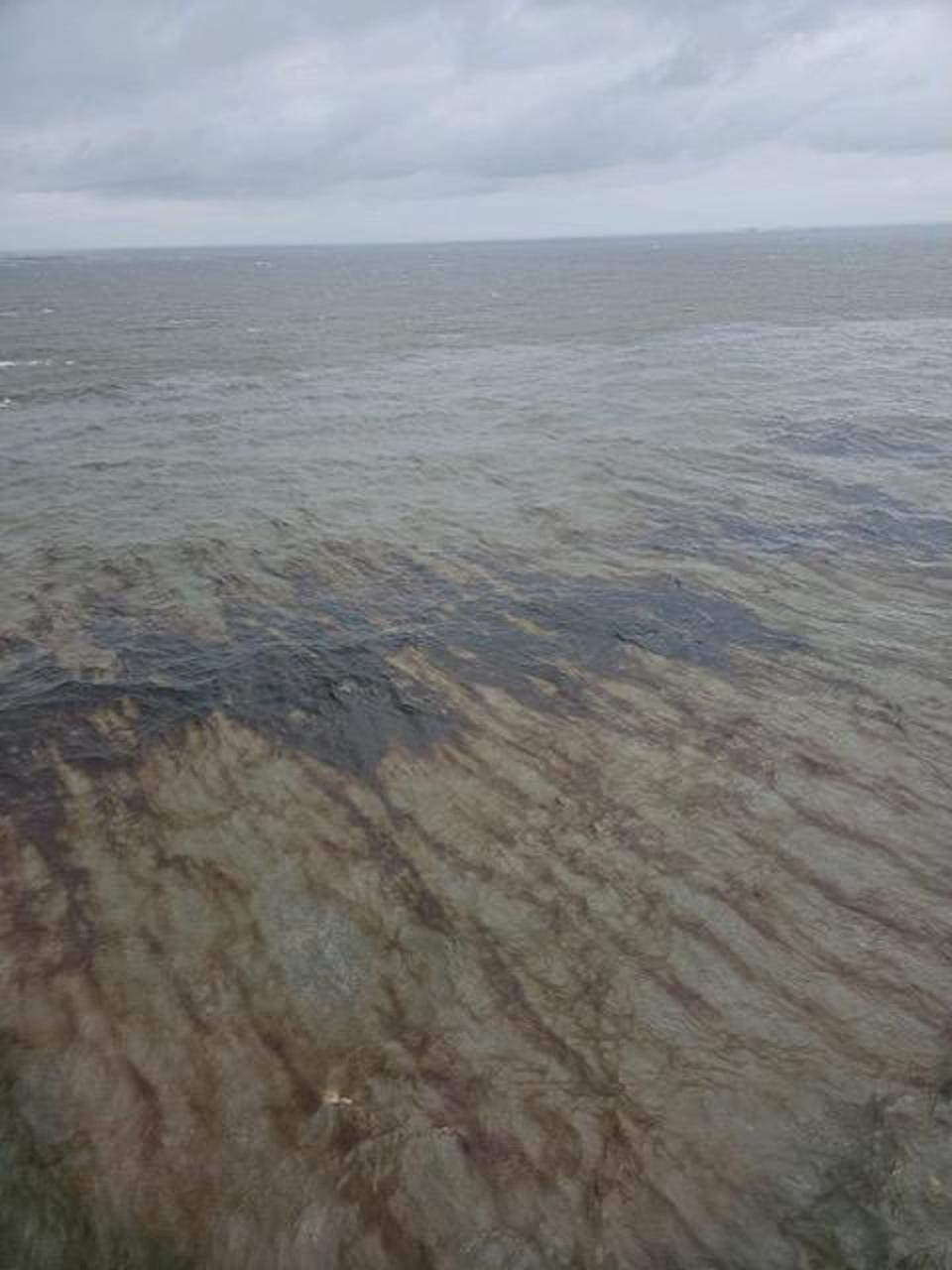One million gallons of crude oil have leaked into Gulf of Mexico
One million gallons of crude oil have spilled into the Gulf of Mexico, threatening to harm endangered species that live there.
The spill was first detected on Friday by the US Coast Guard, who said overflight teams had observed “visible oil” on the surface of the water and “intermittent surface sheens” over the weekend.
Officials said the origin of the leak appeared to be near the 67-mile long pipeline system owned by Main Pass Oil Company, a subsidiary of Houston-based Third Coast Infrastructure LLC, which is located around Plaquemines Parish, in Louisiana, southeast of New Orleans.
In an update on Monday the agency said that three skimming vessels were working to recover oil on the surface and that remotely operated vehicles would continue to survey the pipeline if weather conditions permitted.
The coast guard also said that the volume of discharged oil was “currently unknown” but that the potential release from the affected pipeline could be up to 1.1 million gallons.
“The Coast Guard continues to oversee the coordinated effort to mitigate the impact of the oil discharge,” the agency said in a statement.
“The Unified Command is coordinating with federal, state and local agencies to ensure the safety of the public, protect the environment, and respond to the incident.
“There have been no reports of injuries or shoreline impacts at this time.”
The coast guard said that a marine safety information broadcast was transmitted to vessels in the area. “This situation remains dynamic, and changes should be expected as further assessment and oil spill recovery operations develop,” the transmission said.
The National Oceanic and Atmospheric Administration (NOAA), an agency of the US Commerce Department, is helping oversee the incident.
According to NOAA’s Office of Response and Restoration, in the last 50 years, at least 44 oil spills that discharged more than 420,000 gallons each have occurred in US waters.

If estimates about the volume of the spill are correct, it will be more than three times this amount. NOAA notes that even small amounts of oil spilled in the ocean can have severe impacts on local wildlife and ecosystems.
NOAA’s emergency operations coordinator, Doug Helton, told WWL-TV the impact of the oil, rather than its volume, was of most concern.
"There are endangered and threatened species in Louisiana waters. Most of coastal Louisiana is wetlands and marshes, and that’s typically considered really sensitive to oil," Mr Helton said.
"Even if this doesn’t make it ashore, it doesn’t mean that this is an incident that we can just ignore. There are a lot of things that live out in the gulf."
Among the species that authorities are most concerned about are sea turtles and whales.
The Kemp’s Ridley – the world’s most endangered species of sea turtle – was last year found hatching just north of the spill at the Chandeleur Islands for the first time in 75 years.

The species is considered critically endangered by the International Union for Conservation of Nature and Natural Resources, meaning they are at "extremely high risk of extinction in the wild”.
According to NOAA, Rice Whales – fewer than 100 of which are thought to remain – are the only baleen whales known to inhabit Gulf waters. Scientists have previously warned that pipelines are a major risk to their existence.
The 2010 Deepwater Horizon disaster remains the largest known aquatic oil spill in US history. The well took five months to seal, by which time some 134 million gallons had spilled into the Gulf.
Seventeen people were injured and 11 workers disappeared. Their bodies were never recovered.
The disaster also killed up to 105,400 sea birds and resulted in a record $20.8 billion settlement with BP, Anadarko, Transocean and Halliburton, the operators of the platform.
The Independent has approached Third Coast Infrastructure LLC for comment on the spill.


